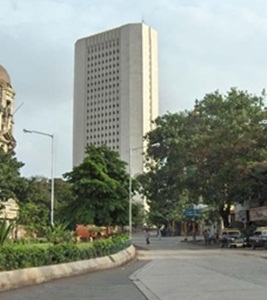The Monetary policy Committee (MPC) of the Reserve Bank of India (RBI) has kept the policy repo rate, under which the central bank lends short-term money to banks, unchanged at 6.5 per cent in its latest policy review.

Consequently, the reverse repo rate under the liquidity adjustment facility (LAF), ie, the rate at which the RBI borrows money from commercial banks, remains at 6.25 per cent. The marginal standing facility (MSF) rate and the Bank Rate have been kept at 6.75 per cent.
"The decision of the MPC (monetary policy committee) is consistent with the stance of calibrated tightening of monetary policy in consonance with the objective of achieving the medium-term target for consumer price index (CPI) inflation of 4 per cent within a band of +/- 2 per cent, while supporting growth," RBI said.
In doing so, the MPC has taken into consideration the current and evolving macroeconomic situation, RBI said, adding there was a perceived fall in consumer price inflation.
Retail inflation, measured by y-o-y change in CPI, declined from 3.7 per cent in September to 3.3 per cent in October. A large fall in food prices pushed food group into deflation and more than offset the increase in inflation in items excluding food and fuel.
India’s gross domestic product (GDP) growth slowed down to 7.1 per cent in Q2 of the current financial year (2018-19), after four consecutive quarters of acceleration, weighed down by moderation in private consumption and a large drag from net exports.
Private consumption slowed down possibly on account of moderation in rural demand, subdued growth in kharif output, depressed prices of agricultural commodities and sluggish growth in rural wages.
However, growth in government final consumption expenditure (GFCE) strengthened, buoyed by higher spending by the central government.
Gross fixed capital formation (GFCF) expanded by double-digits for the third consecutive quarter, driven mainly by the public sector’s thrust on national highways and rural infrastructure, which was also reflected in robust growth in cement production and steel consumption.
Growth of imports accelerated at a much faster pace than that of exports, resulting in net exports pulling down aggregate demand.
On the supply side, growth of gross value added (GVA) at basic prices decelerated to 6.9 per cent in Q2, reflecting moderation in agricultural and industrial activities. Slowdown in agricultural GVA was largely the outcome of tepid growth in kharif production.
Within industry, growth in manufacturing decelerated due to lower profitability of manufacturing firms, pulled down largely by a rise in input costs, while that in mining and quarrying turned negative, caused by a contraction in output of crude oil and natural gas. Growth in electricity, gas, water supply and other utility services strengthened.
Services sector growth remained unchanged at the previous quarter’s level. Of its constituents, growth in construction activity decelerated sequentially, but it was much higher on a y-o-y basis. Growth in public administration and defence services accelerated sharply.
Looking beyond Q2, rabi sowing so far (up to end-November) has been 8.3 per cent lower compared with the same period last year due mainly to lower soil moisture levels resulting from a deficient monsoon and a delayed kharif harvest across states.
Growth in the index of industrial production (IIP) slowed down to 4.5 per cent in September 2018. Capacity utilisation (CU), measured by the Reserve Bank’s Order Books, Inventories and Capacity Utilisation Survey (OBICUS), increased from 73.8 per cent in Q1 to 76.1 per cent in Q2, which was higher than the long-term average of 74.9 per cent; seasonally adjusted CU also increased to 76.4 per cent. Available high frequency indicators suggest that industrial activity has been improving in Q3.
The committee also noted the increasing weakness in global economic growth and rising trade tensions among advanced economies.
The Euro area growth lost pace in Q3, impacted by weaker trade growth and new vehicle emission standards. The Japanese economy contracted in Q3 on subdued external and domestic demand.
Economic activity also decelerated in major emerging market economies (EMEs) in Q3. In China, growth slowed down on weak domestic demand. The ongoing trade tensions and the possible cooling of the housing market pose major risks to growth in China. The Russian economy lost some traction, pulled down largely by a weak agriculture harvest, though the growth was buttressed by strong performance of the energy sector. The Brazilian economy seems to be recovering gradually from the economic disruption in the first half of the year. The South African economy expanded in Q3, after contracting in the previous two quarters, driven by agriculture and manufacturing.
Crude oil prices have declined sharply, reflecting higher supplies and easing of geopolitical tensions. Base metal prices have continued to decline on selling pressure following weak demand from major economies. Gold price has risen underpinned by safe haven demand triggered by political uncertainty in some geographies, though a strong dollar may stem the rise.























